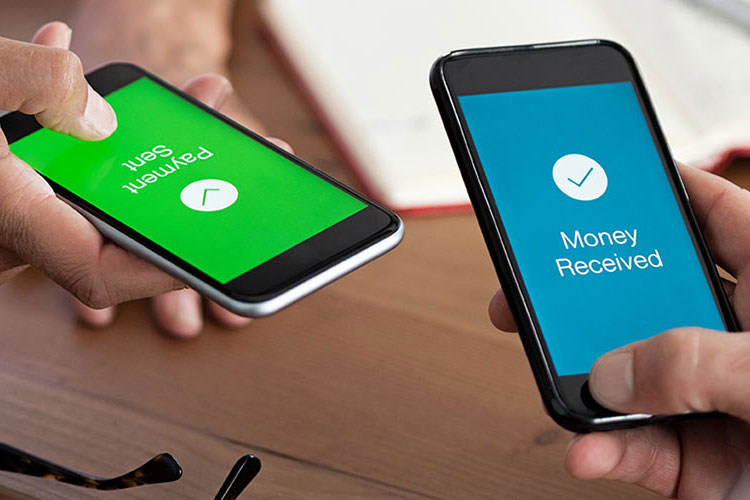Since launching in 1998, PayPal has dominated the peer-to-peer (P2P) payments space. In fact, the company is largely responsible for bringing the concept of “peer-to-peer” into the vernacular — long before the rise of Napster, BitTorrent or Bitcoin.
Over 20 years later, PayPal continues to put up some staggering numbers.1
- 285-plus million users worldwide
- Billions of transactions annually
- Over 100 currencies supported
Yet, that lead is starting to erode as more competitors crowd into the P2P payment game. Below are some of the biggest potential contenders.
1. Apple® Cash
As with most Apple launches, brand recognition and ease of use are the main selling points behind this new P2P payment technology.
Users can send and receive money directly through Apple’s messaging platform. They can also initiate transfers using Siri’s voice-activated technology.
All of this syncs with the tech giant’s other payment service — Apple Pay®. This allows you to use a single unified system for both retail purchases and P2P transfers.
Unlike PayPal, Apple doesn’t charge fees to use its service. The only downside is that Apple Cash is only available on a limited number of devices within the larger iPhone® and iPad® ecosystem.
2. Zelle®
Backed by some of the biggest names in finance, Zelle is another relatively recent arrival. This P2P payment network is currently supported by a number of participating banks, including:
- Wells Fargo®
- Chase®
- Citibank®
- Bank of America®
- US Bank®
This makes onboarding new customers incredibly easy.
Users simply download the standalone Zelle app or their bank’s branded app. Either way, they can start sending and receiving money instantly. Because Zelle is directly connected to the user’s bank account, settlements clear within minutes — instead of the one to two business days required for PayPal transfers.
Admittedly, PayPal has recently started offering instant withdrawals. However, there is a 1 percent fee per transfer, up to $10.2 Zelle, by contrast, is 100 percent free for all domestic transfers among participating banks.3
3. Venmo®
Venmo is PayPal’s answer to … well … PayPal. Or rather, it’s a reaction to all the rival P2P payment networks that PayPal’s success has attracted over the years.
How does Venmo stack up to the competition?
At first glance, it doesn’t seem very impressive:
- Settlements still take several days — instead of a few minutes.
- Bank and debit card transfers are free, but credit card payments carry a 3 percent charge.4
However, Venmo isn’t strictly a P2P payment option. PayPal is trying to brand this service as a new type of social network:
- Users can connect with friends. They can even add contacts from other social networks such as Facebook.
- Users can send messages and emojis. They can also add notes and annotate recent transactions.
Combining personal finances with social media may seem like an odd fit. Yet, the service is already so popular that people have started to use “Venmo” as a verb (the way we already do when “PayPaling someone” or “Googling something”).
4. Cash App
Billing itself as “the easiest way to send, spend, bank, and invest,” Cash App is angling to become an all-in-one payment system that straddles the P2P market and traditional banking.
- As with every other contender on this list, you can send peer-to-peer payments instantly. In addition to banks, Cash App links to credit, debit, and government payment cards.
- In addition to virtual payment options for online shopping, you can purchase stocks and cryptocurrency directly through the app.
- Put your payroll needs on autopilot by integrating direct deposit payments with your Cash App account.
Cash App also comes with a free debit card that you can use to spend your Cash App balance at local retailers. Debit transactions carry no fees.
5. Google Pay™
Google Pay is very similar to Apple Cash in that both are trying to become comprehensive payment solutions that customers can use online, in-store, via app, and with their friends. The main difference is with their target audiences. Google is primarily going after Android users while Apple Cash is geared toward the iOS crowd.
Both have a loyal following – likely due to how tightly Google and Apple have integrated their respective ecosystems. After all, the operating systems they designed power all the other P2P payment apps on this list.
However, Google Pay has a couple drawbacks:
- It can only be used for U.S. payments. As a P2P payment option, it is exclusively for stateside friends and family.
- You can link credit cards for B2C transactions, but not for P2P transactions. This means you can use your card for business purchases, but not to send money to friends.
If you can live with these limitations, Google Pay may be a great option for you.
Need payment acceptance?
If you would like to discuss your payment acceptance capabilities, contact us to schedule a free consultation.
1 “31+ Incredible PayPal Statistics to Know in 2020,” Spendmenot, 28 January 2020
2 “Instantly Withdraw Money from PayPal,” Lifewire, 1 July 2019
3 “Frequently Asked Questions,” Zelle
4 “PayPal vs. Venmo: What’s the Difference?” Investopedia, 8 May 2019







